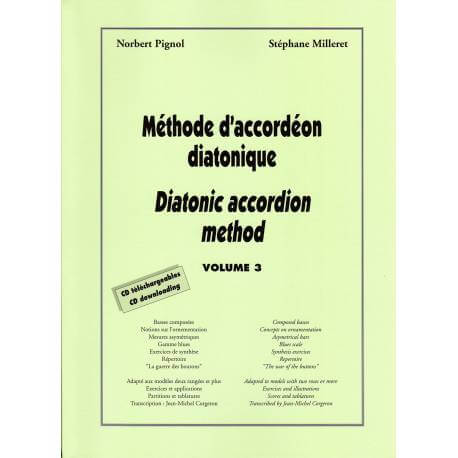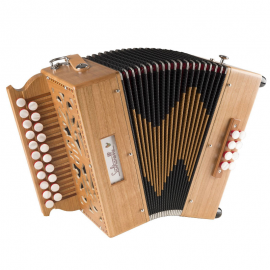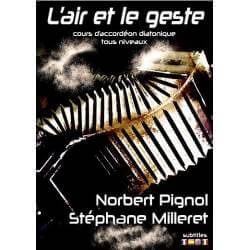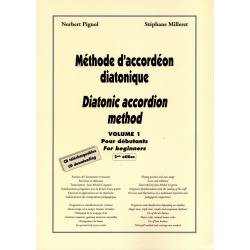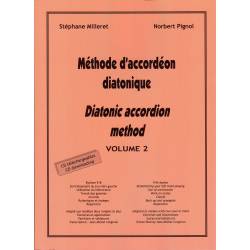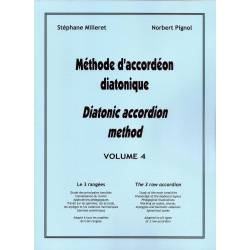This method allows diatonic accordionists who are not beginners, wishing to improve, to acquire the essentials of current instrumental techniques.
Press extracts
“As regards the diatonic accordion, the method of Norbert Pignol and Stéphane Milleret can be considered equivalent to what Eric Boel produced ten years ago for the guitar. For a long time, this type of publication was lacking on the market, all instruments combined. The purpose of the authors does not concern the direct learning of a repertoire but consists in discovering the instrument (2 rows - 8 basses) as well as its technical and harmonic possibilities, thanks to numerous application exercises recorded on CD in speeds slow and normal (score, transcriptions and tablatures by Jean Michel Corgeron). These have been specially designed for educational purposes or arranged for this purpose from traditional ones.
Published in July 2002, volume 3 develops the notions acquired in the previous books, namely: basic rhythms, use of basses and discovery of cross-playing thanks to the preliminary study of the scales corresponding to the tone of the instrument (vol 1 ). Mastery of basses in their duration, setting up with a metronome, work on complete or synthetic scales, discovery of right-hand chords and use of these in a rhythmic or arpeggiated way (vol 2). With the last work, we directly access the field of harmony through the system of composed basses (they complete the right hand chords to produce enrichments or dissonances). Also listed are all the ornamentations tending to personalize the playing, the asymmetrical measures (they contain beats of different lengths and are a characteristic of the Eastern European repertoire). Finally is developed the scale of blues by which the instrumentalist will discover the way of the improvisation.
Throughout these pages, the musician will have the theoretical notions necessary for a good understanding of what is happening. The authors took care to specify however that one should not let oneself be impressed by the abundance or the possible complexity of these being understood, by the knowledge which they have of the medium of the folk accordionists, that this information exempted usually in music school can take quite a long time to integrate. Norbert and Stéphane advise in each of their prefaces direct reading on staff. Addressed from the first exercises, these recommendations are however very quickly abandoned. To further encourage this practice (the instrumentalist tends to naturally turn to tablature) perhaps a new edition should include a chapter devoted to this particular learning. This exists for other instruments.
The progression chosen has, to conclude, nothing innocent. Basically, it seems to obey only one logic, that of making the diatonists autonomous. That is to say to be able to play with full knowledge of the music according to different instruments and one's own mechanical possibilities. Out of the sect, forgiveness of the round of the accordionists between them, we hold here the proof that the resources are casually more numerous than one can a priori suspect it. »
Dominique Le Guichaoua - Trad Magazine
Suitable for models two rows and more
Exercises and applications
Language: bilingual method (English French)
Format: 1 book + 2 accompanying CDs to download.
Binding: spiral
Pages: 106
Year of publication: 2002


